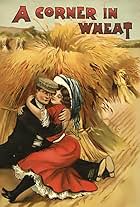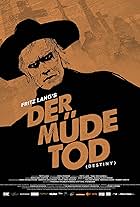IMDb RATING
7.7/10
2.1K
YOUR RATING
The story of two men, one married, the other the lover of the other's wife, who meet in the trenches of the First World War, and how their tale becomes a microcosm for the horrors of war.The story of two men, one married, the other the lover of the other's wife, who meet in the trenches of the First World War, and how their tale becomes a microcosm for the horrors of war.The story of two men, one married, the other the lover of the other's wife, who meet in the trenches of the First World War, and how their tale becomes a microcosm for the horrors of war.
- Awards
- 1 nomination
- Director
- Writer
- All cast & crew
- Production, box office & more at IMDbPro
Storyline
Did you know
- TriviaThe soldiers in the March of the Dead sequence were real soldiers on leave from the front. Most of them were killed within the next few weeks.
- Quotes
Child #1: It's war!
Child #2: What's war?
Child #1: I don't know.
- Alternate versionsThere is an Italian edition of this film on DVD, distributed by DNA Srl: "LE CROCI DI LEGNO (1932) + PER LA PATRIA (J'Accuse, 1919)" (2 Films on a single DVD). The film has been re-edited with the contribution of film historian Riccardo Cusin. This version is also available for streaming on some platforms.
- ConnectionsEdited into Zombie Evolution (2008)
Featured review
With the French losing almost one and a half million soldiers during the Great War, some of France's citizens deliberated whether the great cost in lives was worth the loses. Included in that group was Abel Gance, who wrote and directed the first anti-war movie in cinema, April 1919's "J'Accuse." The film, graphically displaying the carnage that took place over four years in his home country, was an instant classic and was heralded worldwide as accurately describing what shocks civilization sustained from 1914-1918.
A bout with tuberculosis decided Gance's fate in the war when, after being drafted into the French Army, he was shortly discharged for the illness. During the tail end of the war, after hearing the sad stories from his friends on the Western Front, he yearned to produce a movie about the trials they went through--as well as those of civilians far behind the battle lines. He received funding from Pathe, which became surprised at Gance's astronomical final production costs. But in the end, the box office success throughout continental Europe as well as D. W. Griffith's, who had viewed the film and was so impressed by it, control of its lucrative United States distribution, the film studio made an enormous profit from "J'Accuse."
To give the movie its authenticity, Gance re-enlisted in the French Army in its Section Cinématographique and filmed portions of the September 1918 Battle of Saint-Mihiel with the United States Army. His footage interweaves with other portions in the last third of "J'Accuse," which focuses on the front lines of the war.
As critics have pointed out, the first two-thirds play out as a melodrama, introducing the main protagonists, two men vying for the love of Edith, who is married to one of them, an abusive, jealous husband. The poet, who can be Gance in disguise, is the other, a pacifist who has been discharged from service due to illness. Ask if "J'Accuse' is more a pacifist film than an anti-war one, Gance replied, "I'm not interested in politics... But I am against war, because war is futile. Ten or twenty years afterward, one reflects that millions have died and all for nothing. One has found friends among one's old enemies, and enemies among one's friends." The two love interests of Edith end up comrades on the front when the poet re-enlists. Several sequences in that last third of the movie stick in viewers' minds: the soldiers, during a lull, write letters to loved ones at home (these are actual letters written by battle-hardened soldiers); the phantom of death walking among the soldiers preparing for an assault; and the recreated hand-to-hand encounters between the two opposing armies.
The "J'Accuse's" highlight, and the one studied in film schools today, is the "March of the Dead" sequence towards the film's conclusion. Gance was able to get two thousand French soldiers on leave to volunteer their time in acting as corpses from the battles rising from the ground. In what can be technically termed as the first depiction of zombies walking among the living (except these dead aren't the flesh-eating ones), "L'Accuse" shows the soldiers walking to the local village where they judge whether their death was worth their ultimate sacrifice. Hearing about a few scattered profiteers who unscrupulously made large sums of money from the war, these soldiers deliberate on the villagers' fates. Gance noted that out of the 2,000 soldiers in the film returning to the front, 80% became casualties in the last months of the war.
Film historians claim Gance's "J. Accuse" was 10 years ahead of his time with his unique lighting illustrating the French Impressionistic moods of delving deep into the emotions of the movie's characters, and his use of mobile camera movements. The financial success of the 1919 film allowed the director to produce even more ambitious movies in the future such as 1923's "La Roue" and 1927's "Napoleon." Gance even made an later talking film called "L'Accuse" in 1938, warning on the tensions developing as a prelude to World War Two.
A bout with tuberculosis decided Gance's fate in the war when, after being drafted into the French Army, he was shortly discharged for the illness. During the tail end of the war, after hearing the sad stories from his friends on the Western Front, he yearned to produce a movie about the trials they went through--as well as those of civilians far behind the battle lines. He received funding from Pathe, which became surprised at Gance's astronomical final production costs. But in the end, the box office success throughout continental Europe as well as D. W. Griffith's, who had viewed the film and was so impressed by it, control of its lucrative United States distribution, the film studio made an enormous profit from "J'Accuse."
To give the movie its authenticity, Gance re-enlisted in the French Army in its Section Cinématographique and filmed portions of the September 1918 Battle of Saint-Mihiel with the United States Army. His footage interweaves with other portions in the last third of "J'Accuse," which focuses on the front lines of the war.
As critics have pointed out, the first two-thirds play out as a melodrama, introducing the main protagonists, two men vying for the love of Edith, who is married to one of them, an abusive, jealous husband. The poet, who can be Gance in disguise, is the other, a pacifist who has been discharged from service due to illness. Ask if "J'Accuse' is more a pacifist film than an anti-war one, Gance replied, "I'm not interested in politics... But I am against war, because war is futile. Ten or twenty years afterward, one reflects that millions have died and all for nothing. One has found friends among one's old enemies, and enemies among one's friends." The two love interests of Edith end up comrades on the front when the poet re-enlists. Several sequences in that last third of the movie stick in viewers' minds: the soldiers, during a lull, write letters to loved ones at home (these are actual letters written by battle-hardened soldiers); the phantom of death walking among the soldiers preparing for an assault; and the recreated hand-to-hand encounters between the two opposing armies.
The "J'Accuse's" highlight, and the one studied in film schools today, is the "March of the Dead" sequence towards the film's conclusion. Gance was able to get two thousand French soldiers on leave to volunteer their time in acting as corpses from the battles rising from the ground. In what can be technically termed as the first depiction of zombies walking among the living (except these dead aren't the flesh-eating ones), "L'Accuse" shows the soldiers walking to the local village where they judge whether their death was worth their ultimate sacrifice. Hearing about a few scattered profiteers who unscrupulously made large sums of money from the war, these soldiers deliberate on the villagers' fates. Gance noted that out of the 2,000 soldiers in the film returning to the front, 80% became casualties in the last months of the war.
Film historians claim Gance's "J. Accuse" was 10 years ahead of his time with his unique lighting illustrating the French Impressionistic moods of delving deep into the emotions of the movie's characters, and his use of mobile camera movements. The financial success of the 1919 film allowed the director to produce even more ambitious movies in the future such as 1923's "La Roue" and 1927's "Napoleon." Gance even made an later talking film called "L'Accuse" in 1938, warning on the tensions developing as a prelude to World War Two.
- springfieldrental
- Sep 26, 2021
- Permalink
- How long is J'accuse!?Powered by Alexa
Details
Box office
- Gross worldwide
- FRF 3,500,000
- Runtime2 hours 46 minutes
- Sound mix
- Aspect ratio
- 1.33 : 1
Contribute to this page
Suggest an edit or add missing content
























